Driver’s view: Danny Milazzo’s Fendt Rogator 645 sprayer
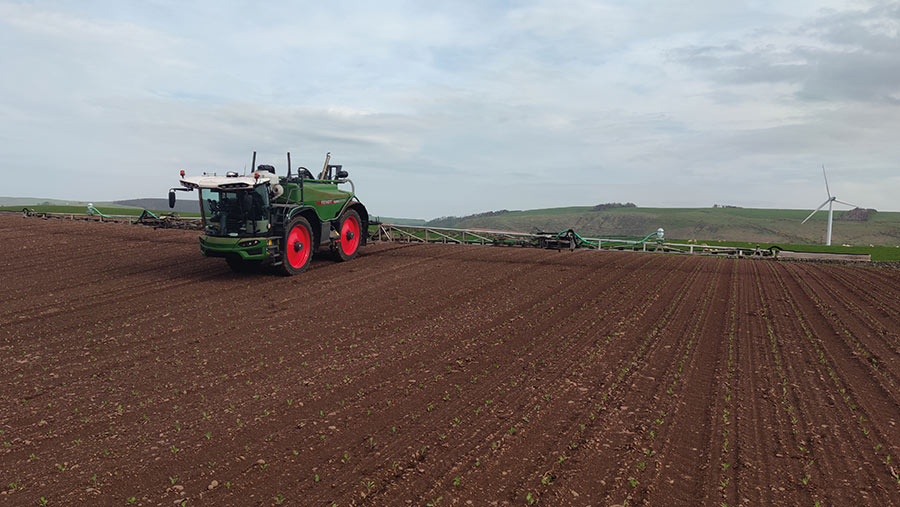 © Danny Milazzo
© Danny Milazzo Danny Milazzo was the runner-up in last year’s Farm Sprayer Operator of the Year competition and is head sprayer operator for veg grower Drysdales, based in Berwickshire.
He operates one of the firm’s two Fendt Rogator 645s and gives us his view on its performance.
See also: Contracting start-up makes bridge kit for JD Greenstar guidance system
Business facts
- Operator Danny Milazzo
- Company Drysdales, Cockburnspath, Berwickshire
- Farm size 816ha, varying from heavy clay to sand
- Crops grown Brussel sprouts (504ha), swedes (232ha) and leeks (80ha)
- Sprayer used Fendt Rogator 645
What sprayer are you using?
We have a pair of ex-demo Fendt Rogator 645s on four-year lease deals.
They replaced a 10-year-old Multidrive 6195 with a Knight demount spray pack and a three-year-old self-propelled Bargam, both of which had a 4,000-litre tank and 24m boom.
The move to 5,000 litres and 36m has been a game-changer in terms of output, particularly as we sometimes end up making 10 separate passes over the same crop in one season.
As a result, we’ve shaved the best part of 200 hours off our annual spraying time.
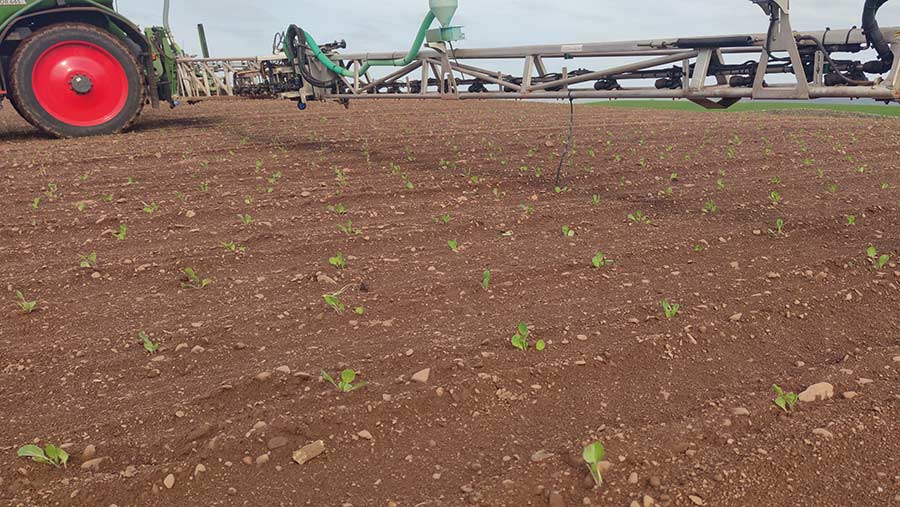
© Danny Milazzo
We also considered Amazone’s Panterra, which ran the Rogator close in terms of comfort.
But it was driveline performance that made the difference and there was no comparison when it came to climbing some of our hillier fields with a full tank of chemical.
What extras did you fit on it?
We have individual nozzle control, which I think is a better balance of accuracy and cost than pulse-width modulation.
One of the machines has manually adjusted five-way bodies, while the other has the electrically controlled 2+2 Dualselect setup. This means I can run two nozzles through a single line and it will automatically switch between them to maintain droplet size, which has helped minimise drift.
We also have different auto boom height systems, with one running Norac’s established five-sensor UC5 and the second fitted with Fendt’s Optisonic, which we have been trying to improve.
Prior to the upgrade, we were having problems keeping the booms at an accurate height when working at 36m, which accounts for 90% of our work.
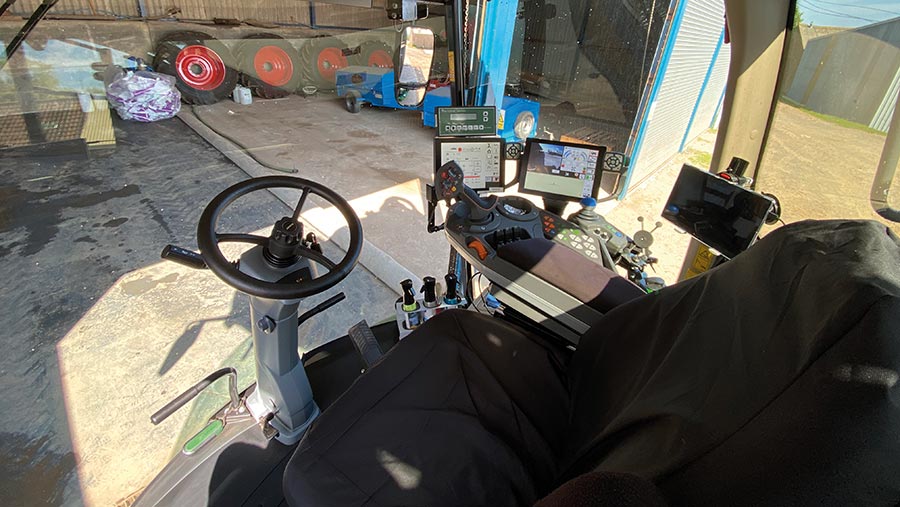
Cab comfort is one of the Rogator’s stand-out features © MAG/Oliver Mark
Fendt’s four sensor system was fine when there was a full canopy, but at other times in the season it was mucking us around, so we occasionally had to run it in manual mode instead.
We’ve been working with the engineers to develop software that takes an average reading from six sensors dotted along the boom – positioned about 2m from the centre, at 9m, and at the tip. As a result, any gaps between the plants don’t cause havoc with the boom height.
It’s still a prototype at the minute, but once it is released other operators will be able to spec a “row crop” function on their Rogator.
One extra we haven’t got, but which I’d like, is a closed-transfer system for filling. The Hypro Pentair version looks good, though by the time the EasyConnect caps are widely available it will probably make sense to wait and order it on our new sprayers in a couple of years’ time.
We’d need it fully integrated into the machines, rather than carting around standalone setups, as we are on the road all day and rarely fill from the same place.
How has it performed?
Like plenty of other Rogators, ours suffered from moisture ingress that caused the boom wiring loom to corrode within 500 hours.
We had it replaced on both machines last summer and followed Fendt’s recommendation to get a like-for-like replacement harness, rather than the upgraded version with different plugs – just in case it caused any further faults.
Other than that, it has been great. As we found when we first demoed the Rogator, the even weight distribution means it travels surprisingly well despite it being 12.2t empty, and diesel consumption isn’t too bad, except when it is working hard on soft ground.
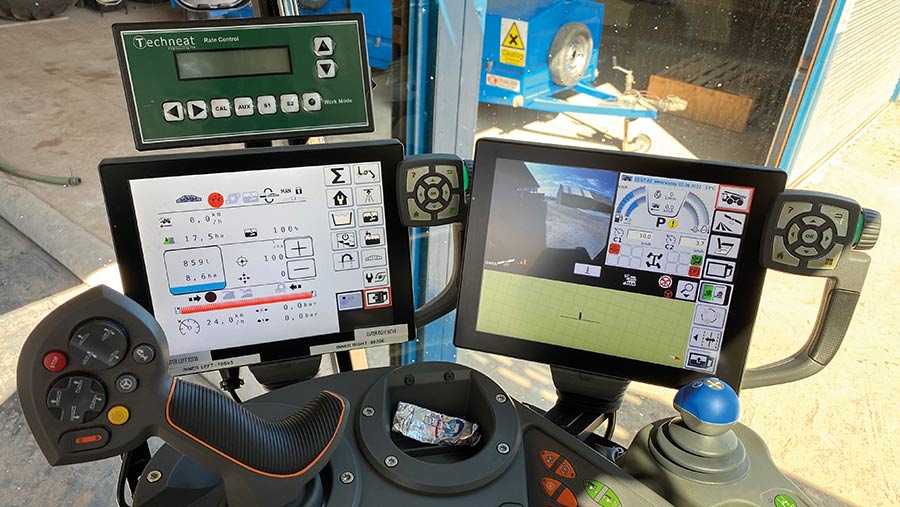
© MAG/Oliver Mark
The other big plus is that it is incredibly comfortable on the road and in the field. It’s far less tiring to drive than previous machines, which is important when we are clocking up so many miles travelling between fields that are up to 60 miles apart.
The hydrostatic transmission is good too, and because there are separate pumps for the wheel motors and spray pack, there is always plenty of power for long, uphill drags.
We had a minor problem with a faulty valve that caused the rear wheels to steer slower than the fronts, but that was easy enough to fix.
Both machines also suffered from oil leaks on the steering valve block, which was caused by an iffy seal. It’s apparently quite a common issue on Rogators.
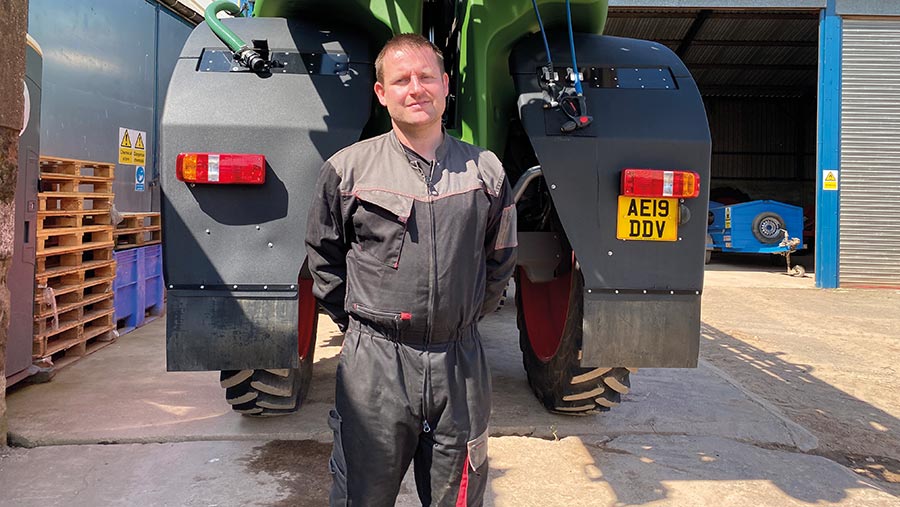
Danny Milazzo © MAG/Oliver Mark
What are your go-to nozzles?
I tend to run at 300 litres/ha for maximum coverage. My go-to caps are asymmetrical Lechler twin flat IDTAs with ceramic tips for pre-emergence and the first nutrition application.
For first-stage fungicide and insecticide sprays I switch to Lechler IDK and IDKTs, which produce a fine/medium droplet for optimum coverage.
Then I go back to the IDTAs when the crop canopy has really thickened out, as they produce coarse, heavy droplets that penetrate a standing crop.
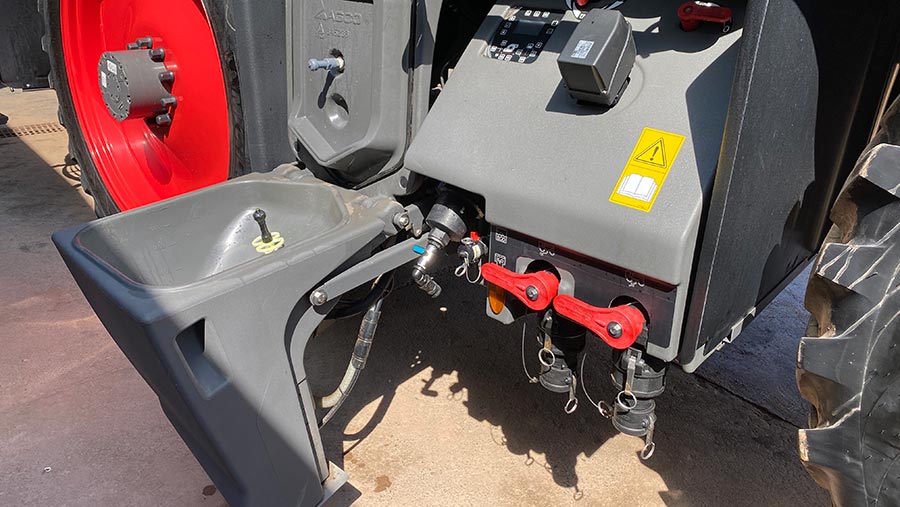
A 12,000-litre bowser allows for in-field fill-ups away from the yard © MAG/Oliver Mark
What’s your spray store and fill-up area like?
The spread of our fields means we are constantly working from different sites so, during the height of summer when we’re at our busiest, we use a 12,000-litre bowser and a couple of IBCs to keep both machines running flat out.
The chemical store is at our main depot – we tend to fill up there in the morning and tow a couple of trailers containing all the products to the different blocks of land.
We have also recently gone paperless with the recommendations, so the information can be sent to an iPad in the cab screen, which has simplified things.
Likes and gripes
✔ 50/50 weight distribution
✔ Supreme operator comfort
✔ Good turning circle
✘ Wiring loom problems
✘ Leaky steering valve
✘ Auto boom levelling upgrade required
Fendt Rogator 645 stats
- Price £280,000
- Year 2019 (ex-demo)
- Hours 1,743
- Engine 7.4-litre, six-cylinder Agco Power
- Power 235hp
- Transmission Hydrostatic
- Road speed 50kph
- Tank size 5,000 litres
- Rinse tank 500 litres
- Nozzles Five-body on one; 2+2 Dualselect on the other
- Auto shut-off Individual nozzle
- Boom levelling Norac UC5 on one; Fendt Optisonic on the other
- Guidance Novatel Terrastar-L
- Boom width 36m
- Wheel sizes Michelin VF 380/90 R54s and Bridgestone VT Tractor UF 650/65 R42s
